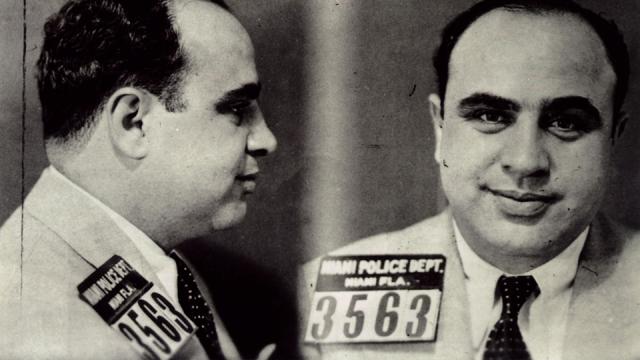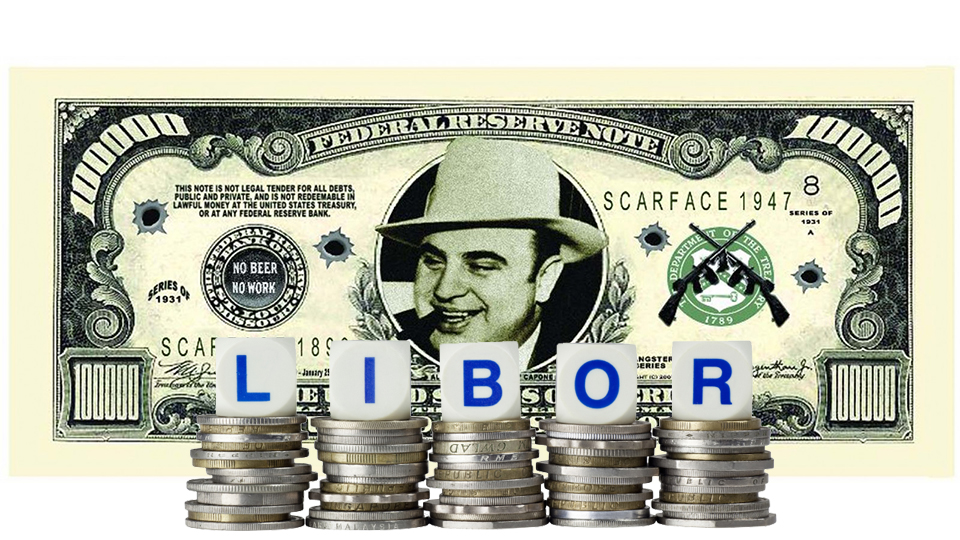
The connections and complicity evident in the LIBOR rate-rigging scandal – especially on the part of regulators – are a weak point for the global banking cartel, which connects a broad network of financial institutions that until now have been discussed as "too big to jail." But a brief look at the way Al Capone’s crime network was toppled by tax evasion in the 1930s reveals similar, delicate threads that could quickly unravel the current criminal banking regime.
Through male-dominated hierarchical structures, the gangsters in Capone's time rose to dominance through a ruthless pursuit of profits at any price. The crimes were right in people’s faces, but they got away with them. Controlling markets as rackets, they co-opted and intimidated authorities. They made enormous riches through organized violence, money laundering and fear-based domination. With an air of invincibility, it seemed at the time that Capone's empire would grow and last forever. Authorities knew he was a criminal overlord who ordered murders, yet none of the charges stuck — until finally he was brought to justice, not for violence, but for tax evasion.
The crimes of the modern banking industry invoke comparisons to the rule of mafia mobs of the 1920s in terms of their projected power and institutionalized acceptance. However, it is worth asking whether the "arrestable" moment for systemic crimes committed in connection with the LIBOR rate-rigging scandal may be nearer than we think.
By manipulating the London Interbank Offered Rate, or LIBOR – the fluctuating interest rate indicator that shows what banks are charged when they borrow from other banks – financiers have revealed not that the system is broken, but that it’s entirely rigged. The scandal, which broke in June of last year, involved collusion and complicity between bankers and traders, all well-documented through communications in which traders asked for a LIBOR rate rig alongside money, champagne and other bribes. But it's not just the banksters who are guilty: it is the regulators and government authorities who went right along with the act.
The LIBOR rates calibrate between $360 and $500 trillion worth of derivatives. Centered in London, the rate-rigging affair has been a globalized effort involving traders and submitters from Asia, Europe, North America, South America, Africa, Oceania — just about everywhere.
Connecting the Crimes
Further similarities appear between the banking crimes of today and the success of mafia operating a century ago. In December, the Huffington Post identified HSBC and 12 other banks known to launder money for dictators, terrorist groups and drug cartels over the past decade. The most infamous case recently involved Mexican drug cartels and Al Qaeda, for which the bankers were found guilty yet not sent to jail.
In other instances, banks – including U.K. state-owned RBS – have invested in tar sands and other practices that cause human rights abuses and ecological destruction. Meanwhile, evidence shows Barclays cooking the books for manufacturers of illegal cluster bombs. And within a few miles of these operations, Goldman Sachs speculators profiteer from grain speculation that causes starvation.
In response, Move Your Money is a U.K. campaign that encourages people to shift to ethical banks away from the “too big to jail” banks. The group reports on banking crimes that include the support of illegal arms sales, casino banking, investment banking, abusing government support, food speculation, mis-selling of financial products — not to mention the bankers’ own huge bonuses even when the banks fail and require taxpayer bailouts.
Rampant tax evasion by funneling money into tax havens is also a key aspect of modern banking. But it is the LIBOR scandal that may provide the potential tie — and the undoing — of the "too big to jail" banks.
“It looks as if the entire game is rigged from beginning to end," said professor Costas Lapavitsas of the University of London's School of Oriental and African Studies, speaking on RealNews. "In other words, it isn't simply collusion and illegality. The game is rotten...[and] it's about time the public realized what's happening and demanded intervention.”
As other commentators have suggested, LIBOR may be the banking industry’s “Tobacco Moment” – the point when the public realizes, and acts on, the long-term harmful impacts of unregulated big banks. If their crimes can be exposed clearly enough, we might also call it the Capone Moment. There are over 20 banks currently being probed for LIBOR rigging, which is expected to draw greater public attention in the weeks and months ahead.
Mainstream media outlets and big finance commentators have frequently referred to LIBOR as a “victimless crime” and something too complicated for most of us to understand. But despite the whitewash, a flood of research and articles are continuing to build public awareness while uncovering the real costs of the scandal. U.K. authorities have so far reacted meekly, with relatively small fines imposed on Barclays, UBS and RBS. However, their own findings showed the ways big banks manipulated rates downwards during the bank bailouts.
Using these findings, the Occupy News Network recently exposed how hidden bank charges, as part of the larger bailout, cost the U.K. hundreds of millions of pounds. This report was followed up by a detailed account of how LIBOR cost local councils in Britain.
Former U.S. Treasury official Neil Barofsky, who worked on the TARP bailout and wrote the book "Bailout: An Inside Account of How Washington Abandoned Main Street While Rescuing Wall Street," has said openly that the regulatory process is “captured by the bankers.” He was responding to then-U.S. Treasury Secretary Timothy Geithner who admitted his awareness of the LIBOR fixing with the excuse: “You have to choose a rate, and we did what everybody did — use the best rate available at the time.”
Naming and Shaming
In Britain, the LIBOR scandal shows how regulation is not only captured by bankers, but is entrusted to them. Until this year, LIBOR was regulated by the British Banking Authority, a lobby group that among other things advocates for huge banker bonuses. During the LIBOR scandal, the BBA was led by Angela Knight, previously a senior government minister in the U.K. Treasury. Along with her responsibilities at the BBA to oversee LIBOR, Knight was director of Brewin Dolphin, a firm that trades in over £25 billion worth of investments, all pegged to LIBOR.
In late 2008, Knight defended LIBOR as a “reliable benchmark” and the “envy of world markets” that “served the financial community worldwide extremely well.” Understanding where her interests lied, the comment possibly had more candor than she intended.
Another key player in London who deserves further scrutiny is Hector Sants. Sants worked at the Financial Service Authority throughout the financial crisis. A former senior Scotland Yard police detective, Rowan Bosworth-Davies, has since accused Sants of being “exactly what is wrong with the city and its style of regulation.” Sants was heavily criticized by a committee of MPs for being “asleep at the wheel” during his time at the regulating authority. Nevertheless, Sants has since been knighted by the Queen and now works as the head of compliance and regulatory relations at Barclays — the bank that launched the global LIBOR scandal.
The biggest disparity between Al Capone and modern banking criminals is that the latter have not just bought out the authorities — but they are themselves the authorities, making it far more difficult to prosecute those who abuse the law. The widening LIBOR scandal has a possibility to break the bankers, but it will take a massive wave of public pressure which forces those captured authorities into action. In polls, 89% of U.K. citizens are demanding that bankers who break the law be jailed for their crimes. Numerous class action lawsuits are already underway. But how, and when, the managers of the global banking racket will be put behind bars has yet to be seen.
3 WAYS TO SHOW YOUR SUPPORT
- Log in to post comments
















